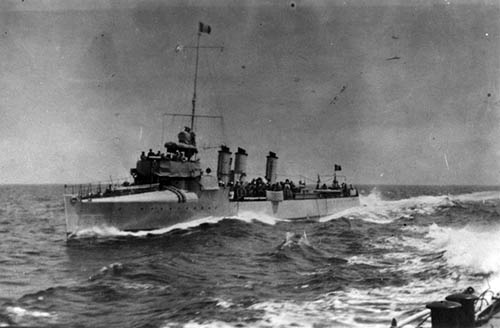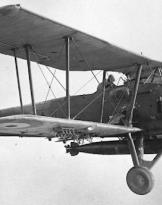Venice, 30 July 1916, 10.00 am: Nazario Sauro embarks on the submarine Pullino for his sixty-second war action. The mission involves forcing the port of Fiume - then Austrian - and the torpedo of some steamers used by the enemy to supply the Kotor base through the Dalmatian channels.
Everyone in the Regia Marina knows Nazario Sauro, if not personally, at least by reputation: an excellent sailor, he is the expert pilot of the Adriatic coasts in the hands of Austria.
In the years in which he commanded the steamers for the Istrian shipping companies (from 1905 to 1914) he studied "with meticulous care, with patient constancy, every point, every inlet, every current, every rock, every accident, every shore" of the Istrian and Dalmatian coast to the point of drafting a personal pilot book in which he recorded all those specifications that the official Austrian nautical charts, for safety reasons, do not report.
A native of Koper, a “very Italian town in Istria” - as his journalist friend Stringari used to say, he was educated in the family “to the Italian way”, and then reinforced his patriotic feelings by attending the local Circolo Canottieri Libertas, a hotbed of irredentists.
At the outbreak of the First World War, not wanting to risk wearing the Austrian uniform and wishing instead to be able to dress the Italian, he moved to Venice where, as an active interventionist, he studied the planning of "landings at Pisacane", ie actions that force Italy to enter the conflict.
Figure already known to the Italian government for providing useful information during the Libyan War, the 21 May 1915 is recruited by the Royal Navy, a few days before Italy's declaration of war against Austria. He is a "special" vessel lieutenant: his nomination comes directly from Admiral Thaon of Revel who puts on the head of Sauro "a trigallonato cap". To all intents and purposes, however, he is an officer of the Royal Navy, of which he wears the uniform of the order.
His task is to conduct, even in conditions of extreme difficulty, "with his eyes closed", the Italian ship within the Austrian ports.
Sauro's contribution is considered precious by the Navy Chief of Staff who immediately uses it, since the beginning of the hostilities.

The 24 may, in fact, participates in the forcing of the base of Monfalcone aboard the destroyer Bersagliere. In service on Marco Polo (June 1915), on the submarine Jalea (August 1915 - photo on the right) and onEmanuele Filiberto (until 8X January 1916), violates the Sistiana port on 7 December 1915. Intended for the 4 PN torpedo boat, 15 1916 night on January XNUMX gives great evidence of wit and seafaring expertise in the recovery of the steamer Timavo - blocked by the Austrians on the Isonzo - which takes command and leads along the river under enemy shooting. The Timavo he will be assigned to the minesweeper service and, after Sauro's death, will be named after him.
The 26 may force the port of Trieste with the 24 OS torpedo boat; his commander, the lieutenant Gravina Manfredi, will remember how, in that night "very dark" and in that atmosphere "dark, drizzly", the success of the mission was due "to the known practice and courageous serenity of the pilot Sauro" , able to orient itself "in the most unfavorable circumstances ... within the uniform and dark amphitheater of the Trieste basin".
After the 4 June raid with the submarine Atropos in Quarnerolo, where the Austrian steamer is sunk Albania, the 12 Jun 1916, aboard the destroyer Zephyr (photo below), Sauro is the protagonist of the "Beffa di Porec", one of the "legendary" actions of the First World War.
The 24 June forces the port of Piran with the torpedo boat 19 OS and the 4 July enters the bay of Rijeka with the submarine Pullino, which affects the Austrian merchant Saint Mark.

In all these missions, the first of the conflict and, therefore, particularly difficult, Nazario Sauro has a fundamental role: he knows the places, the people, the customs.
Thanks to him, and to all the others unredeemed enlisted in the Royal Navy, the strategy of the war in port can be experienced from the first moments of the conflict. They are torpedoes and submarines with Nazario Sauro, Pietro Palese and Ernesto Giovannini on board who violate the enemy ports, anticipating the glories of the Mas.
The 30 July Sauro, decorated with a Silver Medal for Military Value, returns as a pilot on the Pullino, sent to torpedo the steamships used to transport troops and supplies. The boat, perhaps due to the current, is set against the rock of the Galiola island in the Quarnaro; Successful attempts to slip away and destroy the secret documents, the crew moves away on a requisite sailing boat, while Sauro tries to reach the coast aboard a small rowing spear. Taken from an Austrian ship, he is brought to Pola, prosecuted and executed for high treason on 10 on August 1916.
Aware of his fate, he faces the gallows with pride and pride shouting "Long live Italy". The last written words, intended for the wife, are for his family and for the country he claimed to belong to: "Dear Nina, teaches our children that their father was first Italian, then a father and then a man".
Decorated with a Gold Medal for Military Valor in memory, since 1947 Nazario Sauro is buried in the Votive Temple of the Lido of Venice, dedicated to all the Fallen of the Great War, and "his tomb faces Istria, the Adriatic Sea and the freedom for which he lived, fought and died ”(Romano Sauro).












